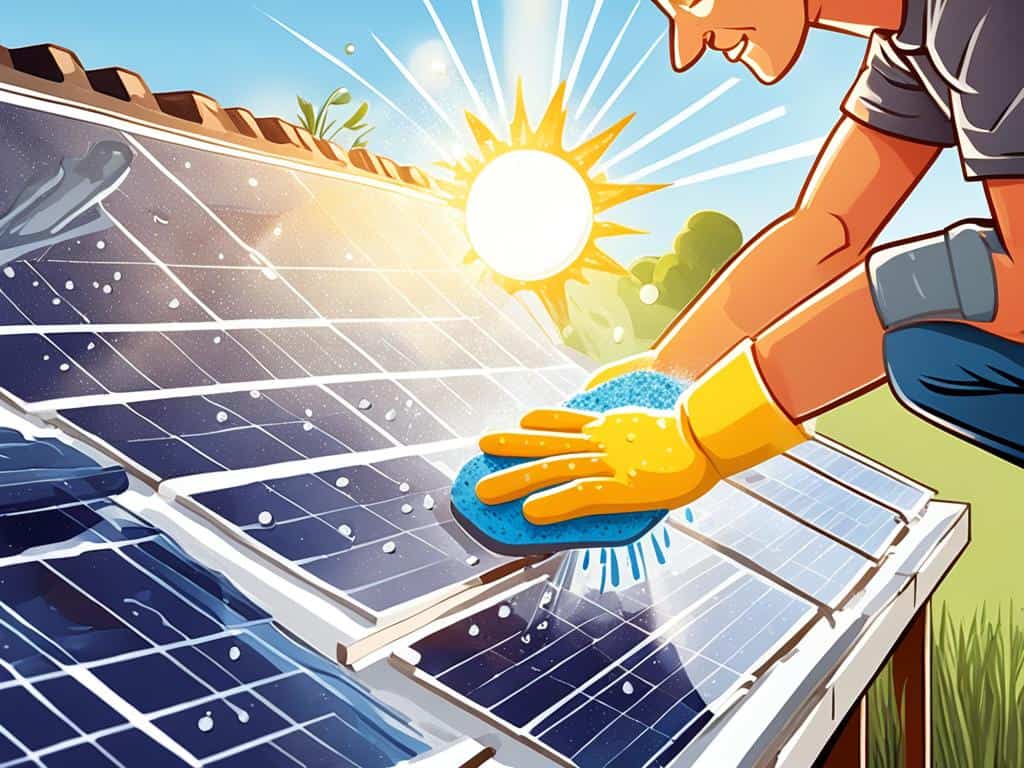1 kW Solar Panel Price: Affordable Green Energy
Discover cost-effective solar solutions in India. Explore the latest 1 kW solar panel price, harness renewable energy, and enjoy long-term savings.
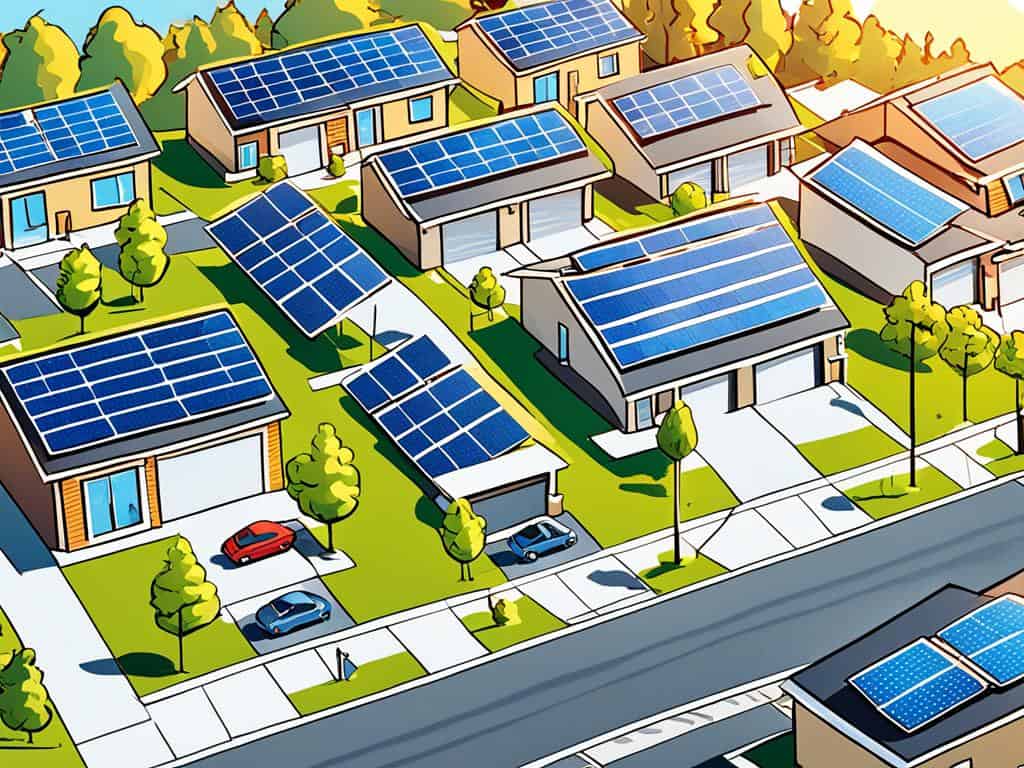
Imagine cutting your energy costs and moving towards a greener future. This is possible by investing in one of the most affordable green energy solutions in India. The cost of solar power is expected to drop to INR 1.9 per unit by 2030. Also, the price of a 1 kW solar panel is becoming affordable for many homeowners all over the country. This is changing the way India looks at solar solutions.
Key Takeaways
- Understanding the significance of the anticipated drop in solar power costs for Indian consumers.
- Exploring how a 1 kW solar panel system can become an integral part of home energy solutions.
- Insight into how affordable green energy is transforming India’s landscape and economy.
- Revealing the potential cost savings and environmental benefits of adopting solar power in India.
- Discussing Fenice Energy’s role in providing top-notch clean energy solutions for homes.
India is making great strides by adding 18 GW of renewable energy capacity in FY24. It’s looking at a $78 billion opportunity in green hydrogen electrolyzers by 2050. The future of clean energy innovation and caring for the environment is promising. With Fenice Energy leading, they offer complete solutions for solar, backup, and EV charging. This gives every home the chance to join this exciting move towards greener energy.
Understanding the 1 kW Solar Panel System
Exploring the 1 kW solar panel system opens doors to green living and investing in the sun. This system is key for those eager to start using renewable resources at home. It’s a small, but mighty step towards embracing cleaner energy options.
Essential Components of a Solar Energy System
The core of a 1 kW solar energy setup includes several parts that work together:
- Solar panels made of silicon lead the charge, turning sunlight into electric power.
- The solar inverter changes DC electricity into AC, which our home devices can use.
- In areas with lots of power outages, solar batteries save extra energy for later use.
- Mounting structures keep the panels in the best position to catch sunlight.
Fenice Energy offers top-quality solar components. These aren’t just powerful but also durable, meeting the unique needs of homes in India.
How 1 kW Solar Panels Contribute to Energy Savings
A 1 kW system helps cut down monthly electricity bills. By using solar power, dependency on the electrical grid decreases. This means savings on solar panels. Just 130 square feet of free roof space can generate about 120 units of clean power each month. It’s a smart move for wallet and planet alike.
Solar Panel Efficiency and Performance
Chasing solar panel efficiency boosts your system’s output. These smaller setups can produce 4 to 5 units of electricity daily. This could sum up to 1440 units of clean energy a year.
Thanks to local incentives like MNRE and SECI subsidies, and the push for Solar Parks, going solar is both eco-friendly and cost-effective. Fenice Energy ensures their installs hit the highest marks for optimal solar performance. This introduces customers to a new era of renewable energy.
Cost Considerations for 1 kW Solar Panels in India
Choosing a 1 kW solar system for your home needs careful thought about costs. Prices for 1 kW systems differ, depending on whether it’s on-grid, off-grid, or hybrid. Other factors like energy output and space needed also affect cost. On-grid systems start at an average cost of INR 72,000.
Let’s explore some key facts about solar panel costs in India:
- India added 18 GW of renewable energy capacity in FY24.
- The country is moving towards tapping into the $78 billion green hydrogen market by 2050.
- NTPC Green Energy plans a big investment in renewable energy through an IPO.
The Borivali project by Adani Electricity combines efficiency with cost-saving through solar power on rooftops.
Here’s the detailed cost range for 1 kW solar systems in India, by panel type:
| Type of Solar Panel | Average Cost Per Watt (INR) | 1 kW System Cost Range (INR) |
|---|---|---|
| Monocrystalline | 74 – 111 | 444,000 – 666,000 |
| Polycrystalline | 66 – 111 | 396,000 – 444,000 |
| Thin-film | 37 – 111 | 222,000 – 666,000 |
Household solar investment costs can drop with federal tax credits. This government support reduces upfront expenses, promoting clean energy use.
After installing a solar panel system, families see big savings on electricity bills. The system’s placement, like having south-facing roofs, boosts its efficiency. This helps cover all energy costs for many homes in India.
Going solar in India is more than saving money. It’s about choosing a greener, sustainable lifestyle. It’s crucial for potential buyers to think about how a system fits with their location and energy use.
Factors Influencing Solar Panel Cost
Solar energy cost is shaped by many factors. Knowing these can help those thinking about switching to this clean energy.
Types of Solar Panels and Their Pricing
Different solar panels offer unique perks, affecting their price. Monocrystalline panels are efficient but cost more. On the other hand, polycrystalline and thin-film options are cheaper but less efficient. Solar module prices, especially in China, fell dramatically from $5,810/kW in 2007 to under $350/kW in 2017. This price drop is seen worldwide, with reductions of 50%-70% from 1992 to 2015 in places like Germany, Japan, Korea, and the USA.
Additional Equipment and Installation Charges
The total solar system cost includes more than just the panels. Additional components like inverters, and installation fees also add to the cost. A skilled solar panel installation is vital for the overall system’s efficiency and safety. Companies like Fenice Energy cover these costs in their pricing for a 1 kW solar system.
Now, let’s examine a detailed cost breakdown:
| Solar Component | Cost Range | Efficiency | Impact on Total Cost |
|---|---|---|---|
| Monocrystalline Panels | Higher Cost | Over 21% Module Efficiency | High Impact due to Efficiency and Longevity |
| Polycrystalline Panels | Moderate Cost | 15% – 17% Module Efficiency | Moderate Impact with Compromise on Efficiency |
| Thin-Film Panels | Lower Cost | 10% – 13% Module Efficiency | Lesser Impact but with Reduced Efficiency |
| Installation | Varies | N/A | Essential for System Performance |
| Additional Equipment (Inverters, Batteries) | Varies | N/A | Essential for System Functionality |
When choosing a solar energy system, consider both long-term benefits and initial costs. Higher-priced components may offer more savings over time thanks to their effectiveness and durability. Consulting with experts like Fenice Energy can help you understand how these aspects affect your solar system’s price.
Installation and Maintenance of Solar Panels
The drive for clean energy has made solar panels more popular. They give us eco-friendly power and the freedom to make our own energy. It’s important to know how to put them up correctly and take care of them. This ensures they work well for a long time.
What Goes into Installing a 1 kW Solar System
Putting in solar panels starts with picking the right spot on the roof. This spot should be around 80 sq ft and perfect for catching sunlight. Next, setting up the panels correctly is key to get the most sunlight. Experts like Fenice Energy make sure everything works together well. They focus on wiring and setting up the inverter the right way.
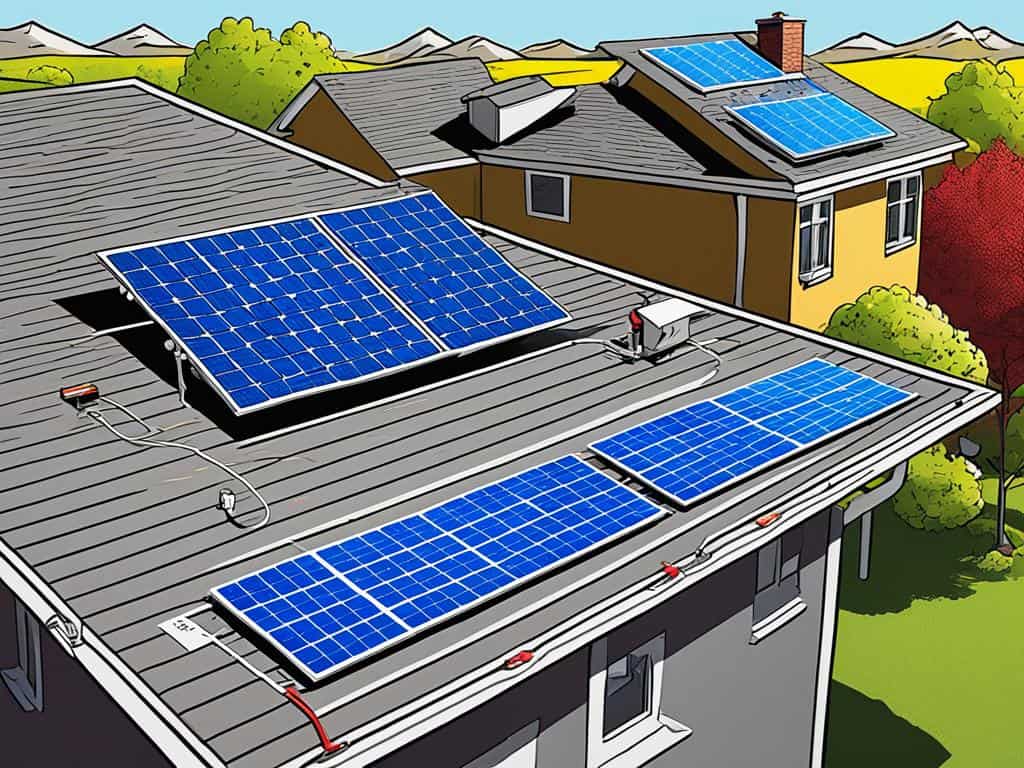
Long-term Maintenance and Care for Solar Panels
After installing solar panels, you need to keep taking good care of them. They can last between 20 to 30 years if maintained well. Cleaning them often is important to stop dirt from blocking sunlight. Regular checks help fix any problems early. Good services provide tips on keeping your system working well after installation.
Choosing experts for putting in and looking after your solar panels has many pluses. It lowers greenhouse gas emissions and makes your property more valuable. Solar energy also saves money in the long run. India is working hard on using solar energy, with plans like the Rooftop Solar Scheme. This helps move us towards a sun-powered future.
Comparison of Solar Panel Types for Residential Use
Choosing the best solar panels for your home means looking at efficiency, cost, and how much space you have. In India, solar power is a growing energy source for homeowners. They value monocrystalline solar panels highly. These panels offer about 20% efficiency, making them a preferred choice even though they’re pricier than others.
The market also has polycrystalline solar panels and thin-film options. Each type suits different needs. Polycrystalline panels, around 15% efficient, are a good middle ground. They are less expensive but still perform well.
Thin-film solar panels work great for large roofs or when space isn’t an issue. With 7-10% efficiency, they’re less efficient but cheaper to make and quick to install. Despite their lower efficiency, their design flexibility is a plus. They blend into various architectural styles because they’re flexible and light.
Trends in solar panel installations are leaning towards smart technology. Things like panel-level MPPT and system monitoring help get the most energy and value from solar panels.
Knowing the details of each solar panel type helps in creating the best system for your home. Think about efficiency, durability, and cost. A well-chosen solar solution can offer stable, reliable green energy for many years.
Let’s check out the main differences between these panels:
| Type of Solar Panel | Efficiency | Cost | Lifespan | Footprint |
|---|---|---|---|---|
| Monocrystalline | ~20% | Higher | Longer | Less space |
| Polycrystalline | ~15% | Lower | Shorter | Moderate space |
| Thin-Film | 7-10% | Lowest | Variable | More space |
Different panels work better in different places, depending on the sunlight and rooftop shape. For example, homes in sunny areas might prefer high-efficiency panels despite the cost. But in less sunny spots, thin-film panels might be smarter because they work with less light, even if they need more space.
If you’re thinking about solar panels, getting advice from experts is a good idea. Companies like Fenice Energy can help you pick the right panels, considering what your home needs and your budget.
- Monocrystalline panels are best if you can spend more and have less roof space.
- Polycrystalline panels work for those with a moderate budget and room for a bit bigger setup.
- Thin-film panels are ideal for saving money or when you need flexible installation options.
No matter which panel you choose, keeping them maintained is crucial. Regular care helps them stay efficient, supporting your energy independence and helping the planet.
1 kW Solar Panel Price
Many homeowners in India are switching to sustainable energy. This is now more affordable, especially in Punjab. The price for 1 kW solar panels has dropped, making it easier for people to get. Government subsidies have played a big role in this change. They make solar energy both reliable and affordable.
The cost for installing 1 kW solar panel systems has fallen. It’s thanks to the government’s push for clean energy. In Punjab, you can get this system for only INR 22,000. This is possible because of a 40% subsidy on systems up to 3 kW. This price is the lowest in the country. It is making solar systems easier to get for many people.
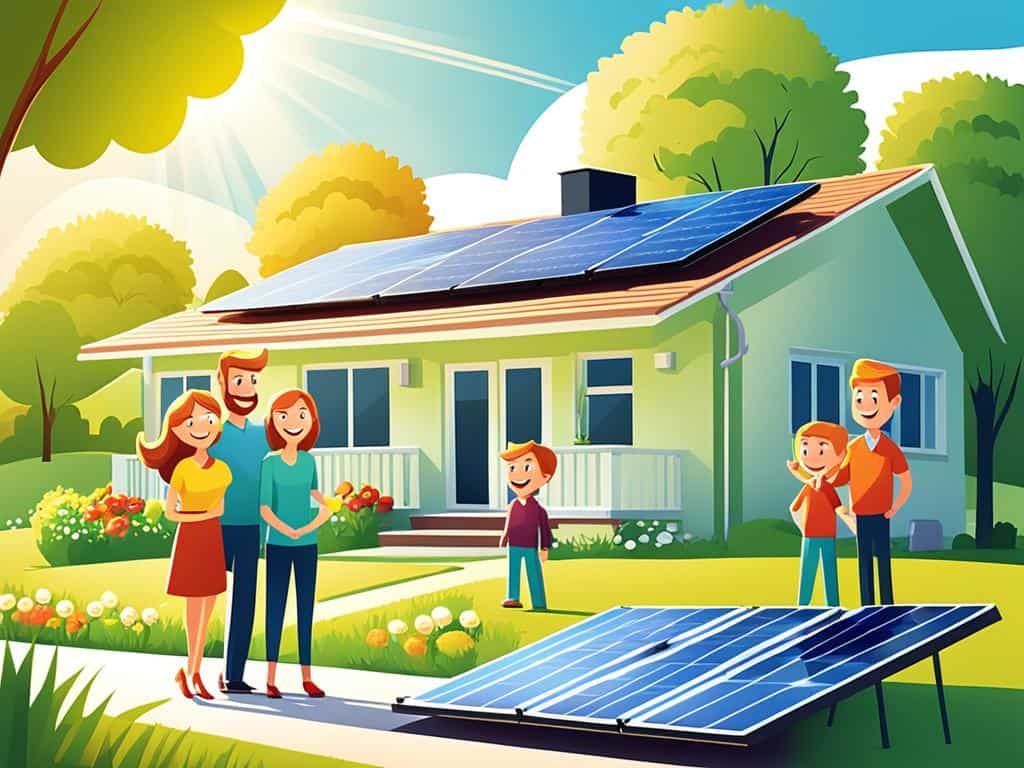
The starting price for a 1 kW rooftop solar setup is about Rs 1 lakh. This includes everything: battery, inverter, and panels. These systems last over ten years. Although the initial cost is high, you save money on energy in the long run. Punjab’s subsidies focus on helping homeowners. It’s a big step toward using clean energy.
But, the solar industry is still careful. Installers are watching to see if the government pays on time. Despite this, the subsidies show India’s big move toward being more eco-friendly. This gives people a choice besides older solar projects, which can have problems.
Let’s look at how prices have changed with these subsidies:
| Capacity | Price Without Subsidy | Subsidy Percentage | Subsidized Price |
|---|---|---|---|
| 1 kW | INR 1,00,000 | 40% | INR 22,000 |
| 3 kW | INR 3,00,000 | 40% up to 3 kW | INR 22,000 per kW |
| 4-10 kW | Varied | Graded Subsidy | Descending with capacity increase |
These steps towards affordable solar power attract current and future homeowners. Now, the cost to get a 1 kW solar panel price makes it easier for more people to use solar energy. It promises a sustainable future and affordable prices. This leads us to a greener tomorrow.
Solar Subsidies and Incentives in India
Switching to solar power is super rewarding now, thanks to solar subsidies India offers. The Indian government makes using solar energy easy and cheap for families.
Government solar incentives help save money and show the country’s commitment to a clean future. They encourage people to join India’s shift to renewable energy. Just imagine, getting all households to use solar panels could create 637 gigawatts of energy!
Though we’re at about 11 gigawatts now, the goal is a big leap to 40 gigawatts. This will mean big savings for everyone. With a 1-2 kilowatt solar system costing around ₹43,000, it’s important to see how these incentives make a big difference in ROI on solar panels.
Navigating Government Solar Subsidy Options
Understanding the mix of central and state benefits in the solar system subsidy plan is key. For example, systems up to 3 kilowatts get a nice discount of about ₹14,000 each. This discount helps you start using solar energy without a huge cost.
Applying for Solar Incentives and Its Impact on ROI
The MNRE has made it easy to apply for solar incentives, encouraging more people to get on board. These subsidies boost the ROI on solar panels significantly. For homeowners watching their spending, saving on power bills with solar energy, plus the help of these subsidies, means quicker savings. And that leads sooner to financial and energy freedom.
Especially since over 60% of India’s solar power potential is in just seven states. And rural areas have even more potential than cities, with 363 gigawatts. So, the government’s push for solar is really a big chance for everyone. It’s an invite to a bright, solar-powered future, made even better with financial help.
Best Solar Panels for Home Use
Finding the best solar panels for home use means looking for efficiency and long life. Homeowners in India can now get more energy because solar panel efficiency has improved. It’s important to look at how long they last, warranty details, and cost versus benefits.
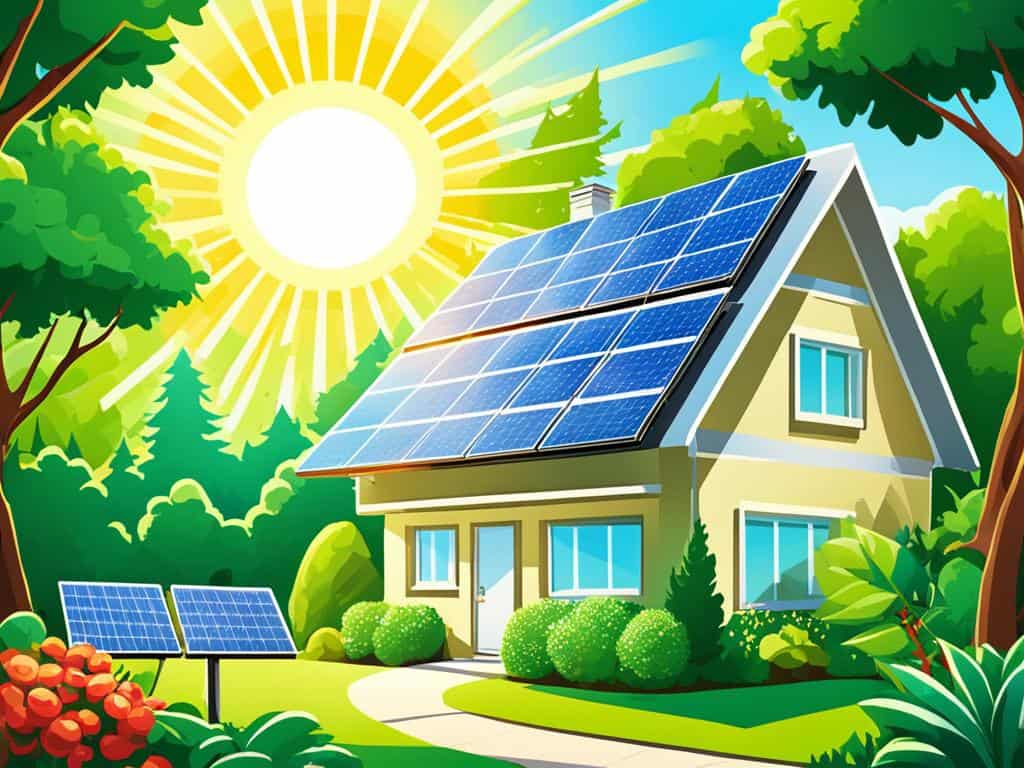
There are many solar technology options for homes, fitting various budgets and needs. Monocrystalline solar panels are liked for their efficiency and look. But polycrystalline and bifacial panels are also efficient and budget-friendly.
When thinking about solar installation, remember to consider the costs and available subsidies. A helpful guide on solar panel installation cost in India gives clear financial info. This is great for those thinking about getting solar panels.
The Indian government encourages using solar by offering subsidies for small home systems (up to 10kW). These subsidies can make solar more affordable, helping homeowners save money and get a quicker return on their investment.
| Solar Panel Type | Average Cost per Watt in INR | Lifespan |
|---|---|---|
| Monocrystalline Solar Panels | Rs. 43 to Rs. 63 | Up to 25 years |
| Polycrystalline Solar Panels | Rs. 30 to Rs. 36 | |
| Bifacial Solar Panels | Rs. 37 to Rs. 52 |
The cost for a 5kW solar system for homes ranges from Rs. 3,15,000 to Rs. 3,57,000 before subsidies. Subsidies can lower these costs a lot. Homeowners should check the latest solar system subsidies in India and see if they’re eligible.
Choosing the best solar panels shows a homeowner’s dedication to being independent, sustainable, and wise with money. Good research and help from experts like Fenice Energy are key to moving to renewable energy.
The Transition to Renewable Energy Sources
India is on the edge of a big change in how it uses energy. Wind and solar power are leading this shift towards cleaner sources. They offer major benefits, like cutting costs for users and reducing the country’s environmental footprint. As India looks to satisfy its growing need for energy, using green solutions becomes key to a sustainable future.
Benefits of Switching to Solar Power
By 2030, India might get 30% of its energy from renewable sources. This move to solar and wind energy is not only good for the planet but also makes economic sense. The demand for electricity in homes and businesses is expected to rise sharply. Solar power is becoming incredibly cheap, making it a very attractive option for new electricity needs.
Renewable Energy and Environmental Impact
Choosing renewable energy helps fight environmental problems. It marks a big step away from harmful fossil fuels. Solar and wind energy are great alternatives to coal power. And the cost of wind energy is set to drop even more by 2030, thanks to new technologies.
This move to cleaner energy fits well with India’s goals for a greener future. The country plans to spend a lot on this, showing how serious it is about this change. With coal becoming more expensive, the economic benefits of renewable energy are even more obvious. This pushes India toward a future that’s good for both the planet and its economy.
Affordable Solar Panels: Finding the Right Fit for Your Home
More and more people want clean energy, so finding affordable solar panels is key. Luckily, prices for solar panels are becoming better. This makes it easier for everyone to use home solar solutions.
Fenice Energy is making a big difference by offering low-cost solar options. These options are still high quality. They make sure even the average home, using around 900 kWh a month, can find a affordable solar panel set up that works.
- Adding solar panels boosts your home’s value. It shows solar power is a smart choice beyond just saving energy.
- Financial help like the Solar Investment Tax Credit (ITC) can lower the cost of getting solar by up to 30%.
- Solar panels last 20 to 30 years and don’t need much upkeep. This makes life easier for homeowners.
- Having your own solar energy system means you’re okay even if the grid goes down, saving you money and stress.
- In many places, you can sell extra electricity back to the grid. This can lead to even more savings.
An informative table will help us understand more about what solar panels offer.
| System Size (kW) | Estimated Number of Panels | Production Ratio | Approximate Savings |
|---|---|---|---|
| 4 kW | 10 panels | 1.1 – 1.6 | Increased efficiency, lower utility bills |
| 6 kW | 15 panels | Based on location | Adapted to energy usage |
| 10 kW | 25 panels | Varies by region | Maximized return on investment |
Fenice Energy helps get you the right solar setup for your home. They look at your yearly energy use and roof space. This ensures you get the most out of home solar solutions.
Putting solar power in your home is easy with the right installers. They help at every step, from showing potential savings to installing everything. With so many benefits and savings on electricity, now’s the time to check out solar power for your house.
Conclusion
The journey to use green energy, like solar power, is important for our planet and wallet. In India, a 1 kW solar panel costs about INR 70,000 to INR 1,00,000. This shows solar energy is an affordable choice. These panels need just 10-12 square meters and can make 3-5 units of electricity each day. It’s a smart move for homeowners who want to live sustainably.
Also, people trust crystalline silicon technologies because they’re proven and reliable. The solar industry keeps getting better with things like smart modules and next-gen thin-film cells. These advancements make solar energy even cheaper and more efficient. Brands like LOOM SOLAR get great reviews, showing customers are happy with today’s solar solutions.
Fenice Energy is here for those wanting to switch to green energy. They offer more than solar panels; they provide a whole clean energy setup for your house. You also get great customer service and warranties that give you confidence. Choosing Fenice Energy means joining a group focused on caring for the environment and being energy self-reliant. With expert advice and the latest technology, any homeowner in India can light up their home with the sun’s power.


